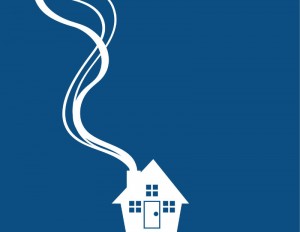If guests were to walk into your home right now, what’s the first thing you think they’d notice? If the smell emanating from your fireplace was the first thing that came to mind, don’t fret. This is a common occurrence for many homeowners, one that’s especially prevalent during the warmer summer months. The good news is help is on the way. The chimney service experts at Environmental Chimney Service are here for you!
Why Does My Chimney Smell So Bad?
The answer here is a pretty straightforward one: creosote. If you relied heavily on your fireplace this past winter and perhaps used more wood than you’d initially planned (some of which might not have been properly seasoned), creosote deposits could have formed on the inner walls of your chimney’s flue. These deposits, when combined with the added humidity that’s in the air this time of year, can emit a wholly unpleasant aroma (and that’s putting it mildly). If you’ve been wondering if you’re the only person who has to deal with this issue, we hope you can find some solace in knowing that this is a naturally occurring phenomenon that fireplace users have been dealing with for centuries! It’s the nature of the beast.
How Do I Rid My Home of These Smells?
Creosote smells linger. They soak into your chimney’s porous masonry and refuse to vacate the premises entirely. However, you can treat the problem to prevent yourself, your family, and your guests from being bowled over by the stench. The certified chimney sweeps at Environmental Chimney Service can come out, inspect your chimney to ensure that the only issue is the creosote (we can recommend additional repairs that may be necessary now and in the future), and sweep out the offending deposits. Having this service completed annually is an absolute must if you plan to make full use of your fireplace when the weather turns cold!
An Additional Consideration for You
If you’ve had your chimney properly cleaned and are still noticing odors from time to time (especially on windy days), you could also be dealing with a draft issue. The majority of older chimneys were constructed with throat-mount dampers. Their metal-on-metal design is their Achilles heel when it comes to keeping the smell inside the chimney. Because they cannot be fully sealed when the fireplace is not in use, some smell can be forced through the opening (no matter how small it may appear) as outside air is forced down your chimney. Because there’s no fire burning in the fireplace to create an updraft, the air ends up going with the path of least resistance, which results in it entering your living space.
As you can see, fireplace users around the world struggle with smelly chimneys, especially during the summer. The CSIA-certified chimney sweeps at Environmental Chimney Service are here to help mitigate this problem (as well as any other problems you may have) for you. We encourage you to contact us at your earliest convenience to schedule an appointment so you can return to enjoying your odor-free living space a bit more.

